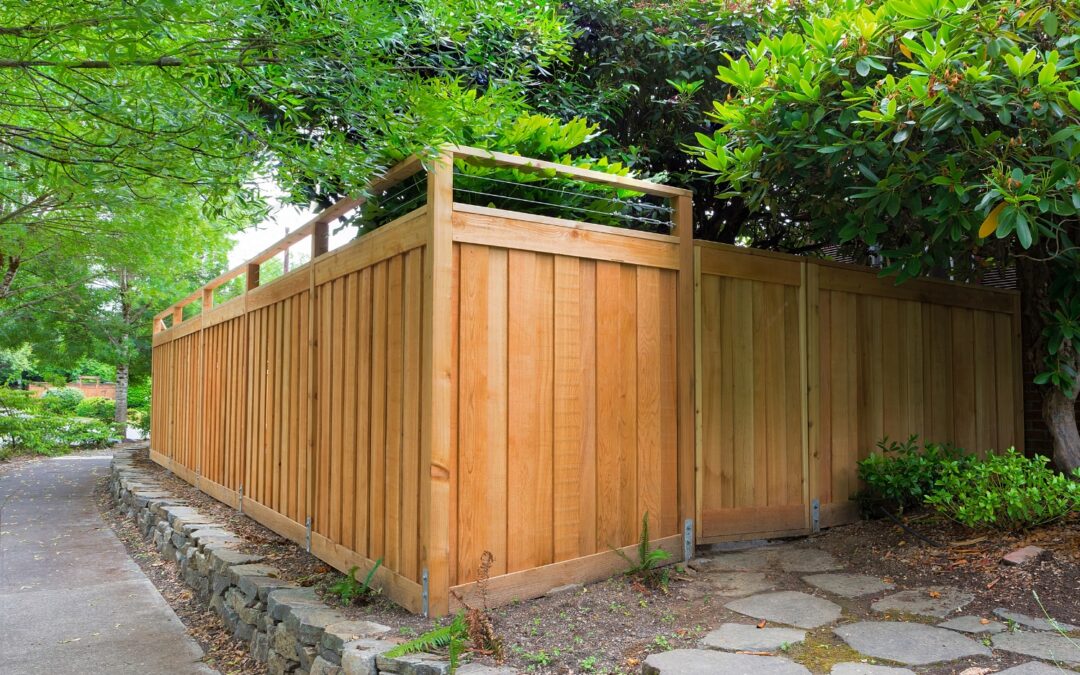


by Tristan Simmons | Jul 1, 2024 | Wood Fencing
Wood fencing has been a staple in American landscaping for centuries, admired for its timeless beauty, versatility, and sturdy construction. At American Fence & Railing, we understand the allure of classic wood fencing and are committed to providing the highest...Classic wood fencing offers numerous advantages that make it a popular choice for homeowners. Its natural aesthetic blends seamlessly with various landscapes, providing both beauty and functionality. Additionally, wood fencing can enhance privacy and security, making it a practical option for residential properties.
Moreover, wood is an excellent insulator, helping to reduce noise and create a more serene environment. With proper maintenance, wood fences can last for decades, offering a long-term investment for homeowners. The ability to customize wood fencing with different stains and finishes further adds to its appeal, allowing homeowners to match their fencing with their home's exterior.
When it comes to classic wood fencing, various types of wood can be utilized, each offering unique characteristics and benefits. Common choices include cedar, pine, and redwood, each known for their durability and resistance to decay. Cedar, for instance, is naturally resistant to insects and moisture, making it a favored option for outdoor use.
Additionally, the choice of wood can impact the overall look and longevity of the fence. Pine, while more affordable, requires treatment to enhance its durability, whereas redwood is prized for its rich color and natural resistance to warping. Understanding the properties of each wood type can help homeowners make informed decisions based on their specific needs and budget.
Maintaining classic wood fencing is essential to ensure its longevity and aesthetic appeal. Regular inspections for signs of wear, such as splintering or discoloration, can help identify issues before they become significant problems. Applying a protective sealant every few years can also prevent moisture damage and extend the life of the fence.
In addition to sealing, routine cleaning is crucial. Using a mild detergent and a soft brush can remove dirt and mildew without damaging the wood. Homeowners should also trim any nearby vegetation to prevent moisture buildup and ensure proper airflow around the fence, which can help reduce the risk of rot and decay.
When planning for a classic wood fencing project, understanding the cost implications is vital. Factors such as the type of wood, height of the fence, and installation complexity can significantly affect the overall budget. While premium woods like redwood may come at a higher price, their durability can offer better long-term value.
Additionally, homeowners should factor in costs related to maintenance and potential repairs over time. Investing in quality materials and professional installation can lead to fewer issues down the road, ultimately saving money. Obtaining multiple quotes from contractors can also help ensure a competitive price and quality workmanship for the project.